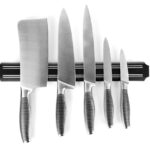
Packing for a Move: Tips and Tricks
Packing for a move can be a daunting task, but with the right approach and supplies, you can make the process much smoother and more efficient. Here, we’ll cover essential packing supplies, tips for packing fragile items, the best order to pack your belongings, how to label boxes, and what items you should avoid packing in a moving truck.
What Supplies Do I Need for Packing?
Before you start packing, gather all the necessary supplies. Here’s a list of essential items you’ll need:
- Boxes: Various sizes, including small, medium, and large.
- Packing Tape: Durable tape to seal your boxes securely.
- Bubble Wrap: To protect fragile items.
- Packing Paper: For wrapping and cushioning items.
- Markers: For labeling boxes.
- Scissors/Box Cutter: To cut tape and open boxes.
- Labels: Pre-printed or blank labels for easy identification.
- Furniture Covers: To protect furniture from scratches and dust.
- Stretch Wrap: To secure items and keep drawers closed.
- Moving Blankets: For added protection of large items.
How Do I Pack Fragile Items?
Packing fragile items requires extra care to ensure they arrive at your new home safely. Here are some tips:
- Use Quality Materials: Invest in sturdy boxes, bubble wrap, and packing paper.
- Wrap Each Item Individually: Use bubble wrap or packing paper to wrap each fragile item individually.
- Pad the Bottom of the Box: Line the bottom of the box with a layer of crumpled packing paper or bubble wrap for cushioning.
- Fill Empty Spaces: Prevent movement by filling empty spaces with packing peanuts or crumpled paper.
- Label Boxes as Fragile: Clearly mark boxes containing fragile items to ensure careful handling.
What Should I Pack First?
Packing can be more manageable if you follow a strategic order:
- Non-Essentials: Start with items you don’t use daily, such as seasonal clothing, books, and decorative items.
- Room by Room: Pack one room at a time to stay organized.
- Off-Season Items: Pack items that are currently out of season.
- Less Frequently Used Items: Pack items from guest rooms, basements, attics, and storage spaces next.
- Everyday Essentials: Pack essential items you’ll need immediately upon arrival last, such as toiletries, a few sets of clothing, and basic kitchen supplies.
How Do I Label Boxes?
Proper labeling can make unpacking much easier. Here’s how to do it effectively:
- Use Clear, Bold Markers: Write clearly so labels are easy to read.
- Include Room and Contents: Label each box with the room it belongs to and a brief description of its contents (e.g., “Kitchen – Pots and Pans”).
- Color-Code: Use different colored markers or labels for different rooms to quickly identify where each box should go.
- Indicate Fragility: Clearly mark boxes containing fragile items with “FRAGILE” and “HANDLE WITH CARE.”
What Items Should I Not Pack in a Moving Truck?
Certain items should not be packed in a moving truck due to safety, legal, or practical reasons. Here’s a list of items to avoid:
- Perishables: Food that can spoil during transit.
- Hazardous Materials: Flammable, corrosive, or explosive items such as gasoline, propane tanks, and certain cleaning supplies.
- Valuables: Important documents, jewelry, and other valuable items should be transported personally.
- Plants: Most moving companies do not transport plants, as they can be damaged or die in transit.
- Personal and Sentimental Items: Items with personal or sentimental value should be kept with you.
By following these tips, you can ensure that your packing process is organized, efficient, and safe. Happy moving!
4o
Related posts:
 10 Simple Tips for Packing Up Your Home for a Move
10 Simple Tips for Packing Up Your Home for a Move
 The Ultimate Timeline: When to Begin Packing for Your Move
The Ultimate Timeline: When to Begin Packing for Your Move
 10 Essential Packing Tips for a Smooth and Stress-Free Move
10 Essential Packing Tips for a Smooth and Stress-Free Move
 tips for moving into a new house
tips for moving into a new house
 Knife Packing 101: The Best Ways to Secure Knives for Moving
Knife Packing 101: The Best Ways to Secure Knives for Moving
 packing and unpacking services… what you should know
packing and unpacking services… what you should know
